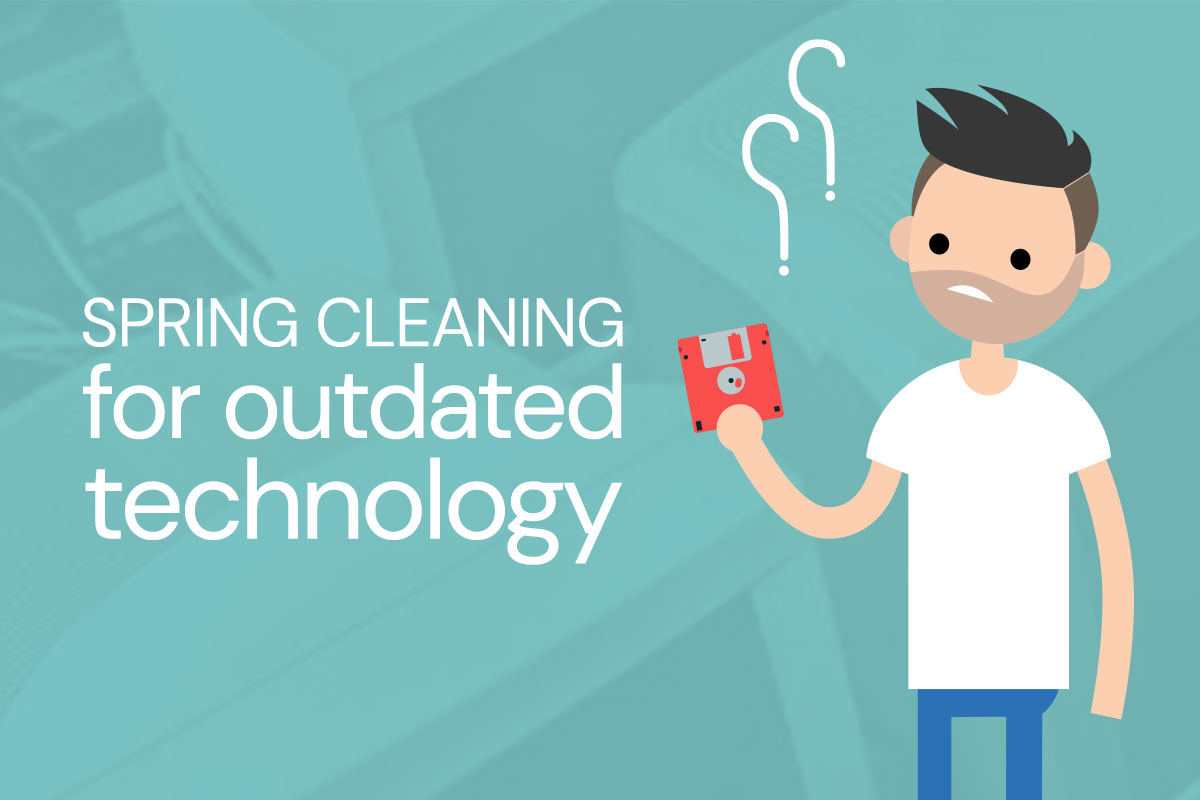With spring on the horizon, you might be entertaining thoughts of spring cleaning. We certainly are! And one of the areas in our lives that seldom gets touched is old technology. You’ve got a few dozen floppy disks and not a single floppy disk drive in the house. You’ve got a box of CDs and your Mac Air doesn’t have a CD tray. What about those old VHS tapes or even Super 8 film rolls? We’ve got solutions for each of these to help you ditch your outdated technology and clear the clutter from your house.
Floppy Disks and Zip Disks
If the disk contains an installer for printer software for a printer you don’t own anymore, you can safely throw the disk out. But if you suspect it might have picture files or your master’s thesis on it, then you’ll want to move the files to a more accessible media format. If you still have a floppy disk drive, you can drag the files to a USB drive. But if not, there’s a service called floppydisk.com, which will transfer your data from a 3.5″ Windows or DOS disk to a USB drive for $1.95 each (including the USB stick!). They can also do 5.25″ disks (the “floppy” kind), Mac disks, and even Zip disks. And they erase your old data and recycle them after the transfer. If you can believe it, some organizations (*cough* the U.S. government *cough*) still use floppy disks.
CDs
Companies offering to transfer data from CDs abound all over the web. If you no longer have a computer with a CD drive, you can purchase a USB CD drive on Amazon for as little as $20 or $25. For data, you can just drag the files onto a USB drive. For music that you might want to have access to in the cloud, your computer probably already has the software to do so: Windows Media Player or iTunes. You can even set iTunes to automatically import audio tracks as MP3 files and then eject the disc, so you don’t have to sit there watching the process.
Other Media
For digital data found on floppy disks and CDs, you can generally feel safe discarding the originals. But you may not want to part with your grandfather’s Super 8 reels or negatives of photos—and that is okay! Make sure you are storing the originals as safely as you can, in a place that doesn’t suffer extremes of temperature, protected from pests, and thoroughly labeled). Meanwhile, you’ll have digital versions that can be uploaded to the cloud for you to keep indefinitely. If you’re in Dallas, we’ve used U-Edit Video to convert VHS, audio cassettes, and other media to digital formats. Online, you’ll find myriad options at all different price points.
What to do with all this newly recovered data? If you can, it’s of course ideal to go through it and delete what you don’t need. If you’d like to continue to have access to it, we highly recommend a Network Attached Storage device (like a Synology) that backs up to a cloud services like AWS.
Questions about dealing with old data? We wrote a post about data governance for regular people that might help! More questions? Contact us.






